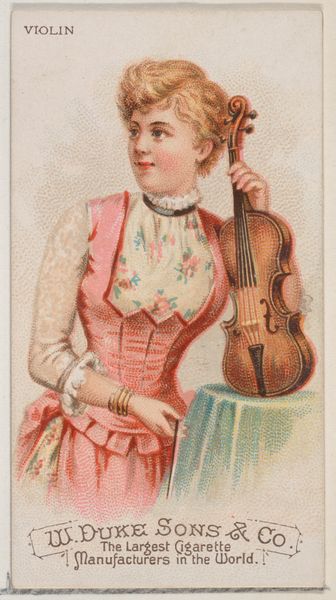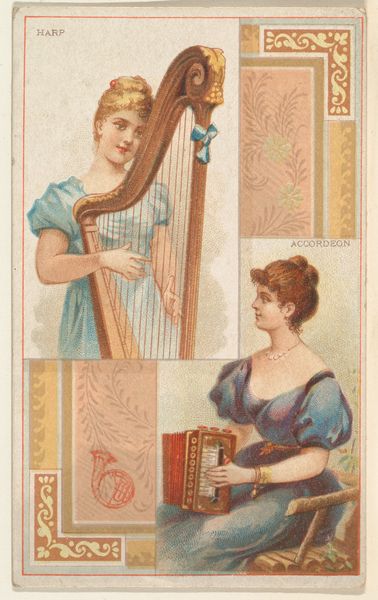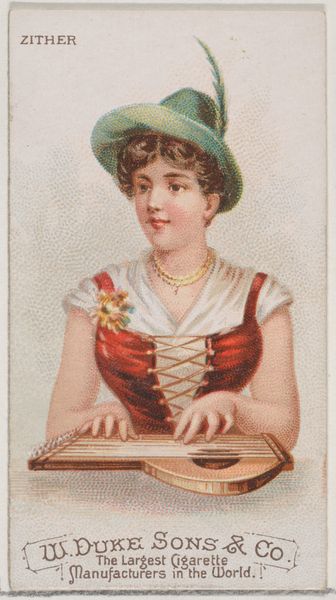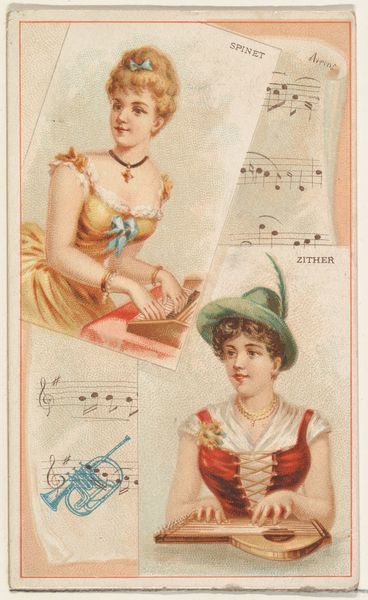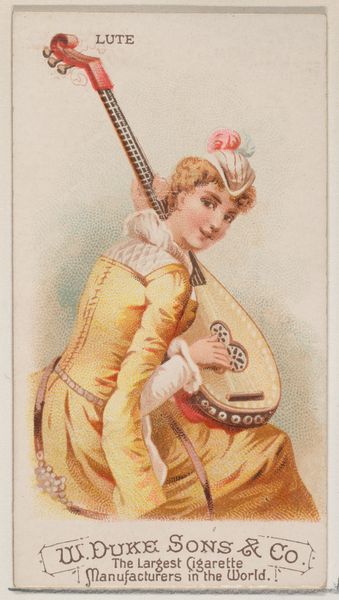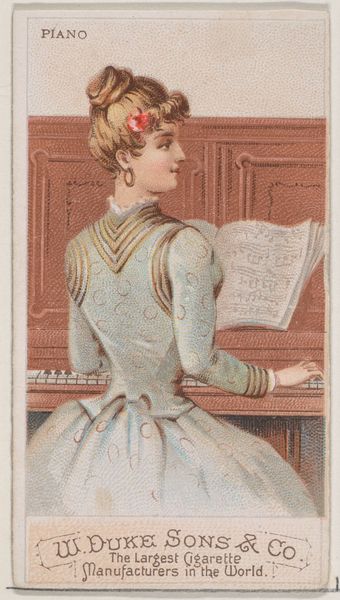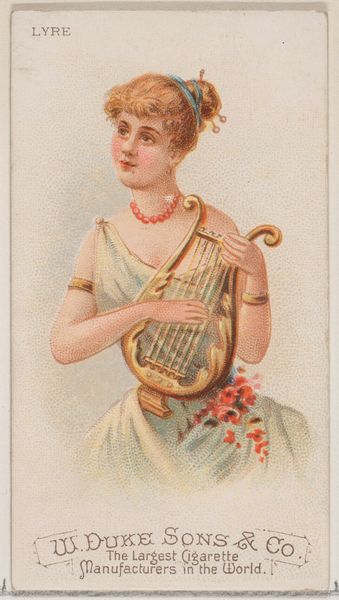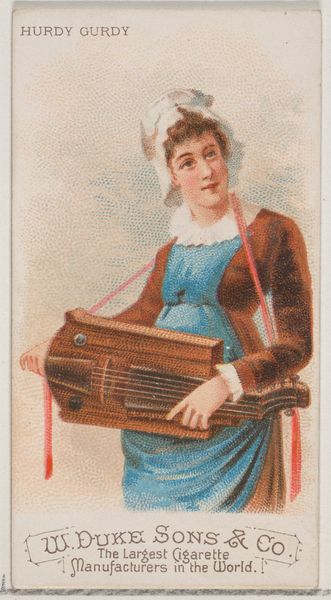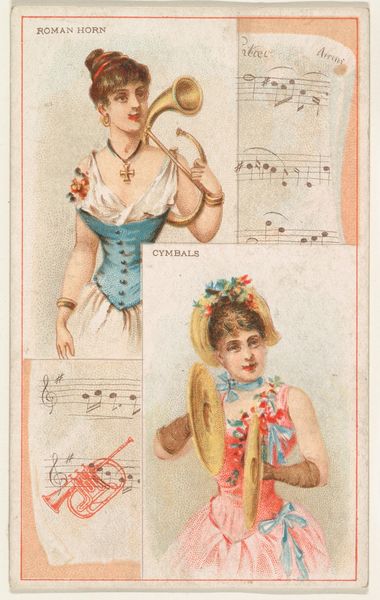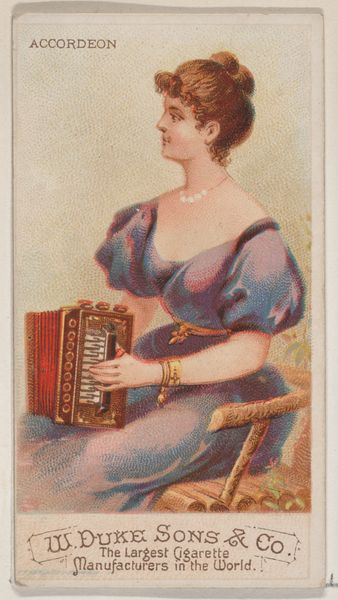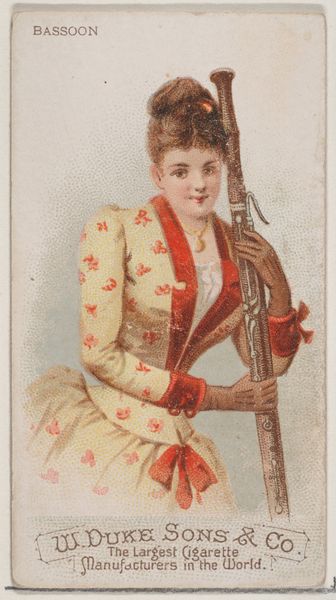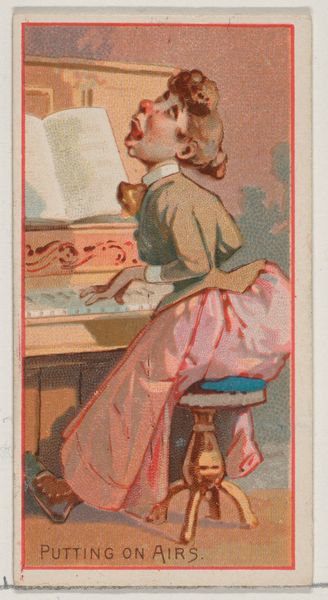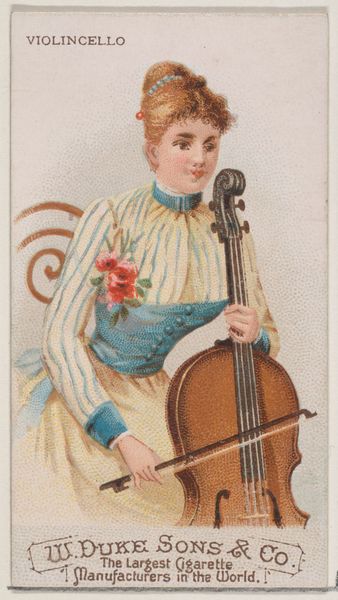
Organ, from the Musical Instruments series (N82) for Duke brand cigarettes 1888
0:00
0:00
Dimensions: Sheet: 2 3/4 x 1 1/2 in. (7 x 3.8 cm)
Copyright: Public Domain
Curator: So, let's have a look at this image—it's an advertisement card titled "Organ," part of the Musical Instruments series from 1888, produced by W. Duke, Sons & Co. for their cigarette brand. What’s your first impression? Editor: It feels… manufactured, obviously. The airbrushed pink dress, the soft lighting...it’s striving for gentility, but the context screams mass production, a disposable token used to sell something unhealthy. The actual craftsmanship in the drawing feels secondary. Curator: I see it as more aspirational. Pink has always carried connotations of youth, health and vibrancy, it reflects the aspirations of a society that views prosperity through the acquisition of consumer products. There's a delicate balance here: the overt symbolism of domestic accomplishment embodied by the organ juxtaposed with the subtle allure of smoking—a potent message. Editor: But isn't the symbolism ultimately flattened by its intended use? This isn't some carefully commissioned portrait; it's an incentive to buy cigarettes! How does that impact its perceived cultural significance? Is the artistic talent minimized to merely selling "The Largest Cigarette Manufacturers in the World"? Curator: Certainly, the commercial intention colors our interpretation. But let's not underestimate the layered messaging. Music, specifically the organ, carries with it the history of the church, religious significance. And now its domesticated and played by an attractive fashionable women to entice you into buying a very profane product. The color pink itself has historical and even gendered connections, from its initial aristocratic associations to its more contemporary use in children's toys. This card doesn't just sell cigarettes; it packages them with a lifestyle, a statement about wealth and culture. Editor: I agree there are layers, but I find it hard to divorce the imagery from the means of its production. The drawing itself, the coloured pencil, likely involved cheap materials, piecework labor in an age of rampant industrialization. How does that tension impact its romanticized aesthetic? How is a culture being defined through consumer products and industrial manufacturing? Curator: And how those objects take on their own agency through cultural memory. We see in it our contemporary social concerns of corporate marketing and personal lifestyle. That to me is the artwork's value today. Editor: For me, it prompts deeper questions about labor, consumerism, and how "high" art is consumed and commodified within popular culture. Curator: A poignant and perhaps a permanent symbol, reminding us of consumer desire and social context in every pencil stroke.
Comments
No comments
Be the first to comment and join the conversation on the ultimate creative platform.

